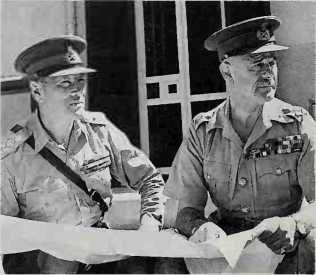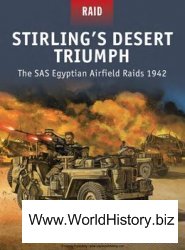Cause of a prolonged struggle between the Admiralty and Bomber Command.
The last and worst crisis came early in 1943. In March it began to look as if the wolf packs were gaining the upper hand over the convoy escorts. This triumph proved illusory and the threat disappeared with incredible rapidity. The grossly delayed availability of long-range aircraft; more escorts, some organized in support groups; escort aircraft carriers; the breaking of the U-boat codes; increasing use of new devices (short-wave radar, high-frequency radio direction-finding equipment aboard escorts); and weapons (“hedgehog”, the heavy depth charge), all played their part.
Ddnitz withdrew his submarines from the North Atlantic and attempted to attack in more distant waters. American escort carrier groups in mid-Atlantic destroyed most of the “milch cow” support submarines and many other U-boats and halted this. Towards the end of 1943, the U-boats began to use acoustic homing torpedoes against escorts. It long remained secret that the Allies were using similar weapons from aircraft. The introduction of snorkels enabled the U-boats to continue to fight the losing battle until the end. Fortunately for the Allies, the new type XXI and XXIII U-boats were only just coming into service at the end of the war. Their high submerged speed and endurance would have been very difficult for the escorts to cope with.
In the end, aircraft sank the most U-boats, although surface escorts were not far behind them. A comparatively small investment in submarines by Germany, plus the skill and bravery of their crews, made the Allies fight a desperate battle, which was vital to their success in the war. Without victory in the Atlantic, nothing else was possible. DJL.
Atlantic Conference. Meetings between Churchill and Roosevelt on board uss A ugusta and hms Prince of Wales between August 9 and 12 1941 in Placentia Bay, Newfoundland. These resulted in the Atlantic Charter, which contained eight clauses to the effect that; neither country should seek territorial aggrandisement; all territorial changes should be subject to the approval of the local inhabitants; people should have the right to choose their form of government; nations should have equal rights to trade and access to raw materials; improved labour standards, international economic advancement and social security should be sought; after the “final destruction of Nazi tyranny”, peace should afford freedom from fear and want; the freedom of the seas should be secured; there should be international agreement to abandon the use of force. Immediately, the Charter drew America, though still neutral, closer to Britain, especially in the Battle of the Atlantic. ANF.
Atlantic Conveyor. Cunard container ship of 14,950 tons, requisitioned for use as aircraft and logistics ferry during the Falklands War. Sunk on May 25 1982 off Falklands with the loss of 10 Wessex, 1 Lynx and 3 Chinook helicopters as well as most of the British Task Force’s reserves of tentage.
Atlantic wall. While the bulk of Germany’s armies were engaged on the Eastern Front, the western extremities of Nazi-occupied Europe were protected by defences that stretched from the North Cape to the Pyrenees. Concrete fortifications, mines, guns and waterline obstacles were arrayed to frustrate any Allied attack.
Atlas missile. America’s first intercontinental ballistic missile, first deployed in 1958 and withdrawn for use as a space booster in 1965. Liquid fuelled, later missiles were in semi-hardened installations and silos from which the weapons were elevated before launch. By 1962, 142 Atlases were deployed; range was up to 11,100 miles (18,500km), CEP about 6,600ft (2,000m) and warhead yield 1.4 or 3.75 megatons depending on variant.
Atomic Demolition Munition (ADM). Nuclear explosive charges emplaced as mines or carried as demolition charges. The most recent American adms, made in the 1960s, were the 3501b (157.5kg) “Medium adm” W-45 with a yield of up to 15 kilotons emplaced by 6-man teams using jeeps or helicopters and the 1501b (67.5kg) 0.01-1 kiloton “Special adm” W-54 emplaced by two men. The latter is still in service.
Atomic bomb. Early name for nuclear weapons. As these use the energy obtained from events concerning the nuclei of atoms, “nuclear” is the more accurate term.
Aubers Ridge. On May 9 1915, in support of the French Artois offensive, the British First Army, under Sir Douglas Haig, attacked either side of Neuve-Chapelle with the object of securing a foothold on Aubers Ridge, 3,000yd (2,700m) to the east. The attack cost the British 11,600 casualties for negligible gains. Complaints about ammunition shortages helped to provoke the “Munitions Crisis” at home and hastened the formation of a coalition Cabinet and the Ministry of Munitions.
Auchinleck, Field Marshal Sir Claude (18841981). Br. Commander British forces ashore at Narvik in the Norwegian campaign from May 11 1940 until they were evacuated on June 8; then c-in-c India until Churchill selected him to relieve Wavell as c-in-c Middle East from July 5 1941. He
Mounted the successful “Crusader” offensive to relieve Tobruk in November 1941 and took personal command of Eighth Army after its

Field Marshal Auchinleck (left)
Defeat by Rommel at Gazala in June 1942. He succeeded in checking Rommel’s advance into Egypt on the El Alamein Line in July, but was dismissed by Churchill in August 1942 and returned to India to take over again as c-in-c when Wavell became Viceroy. Promoted Field Marshal, he handled the partition of the British Indian Army between India and Pakistan




 World History
World History









